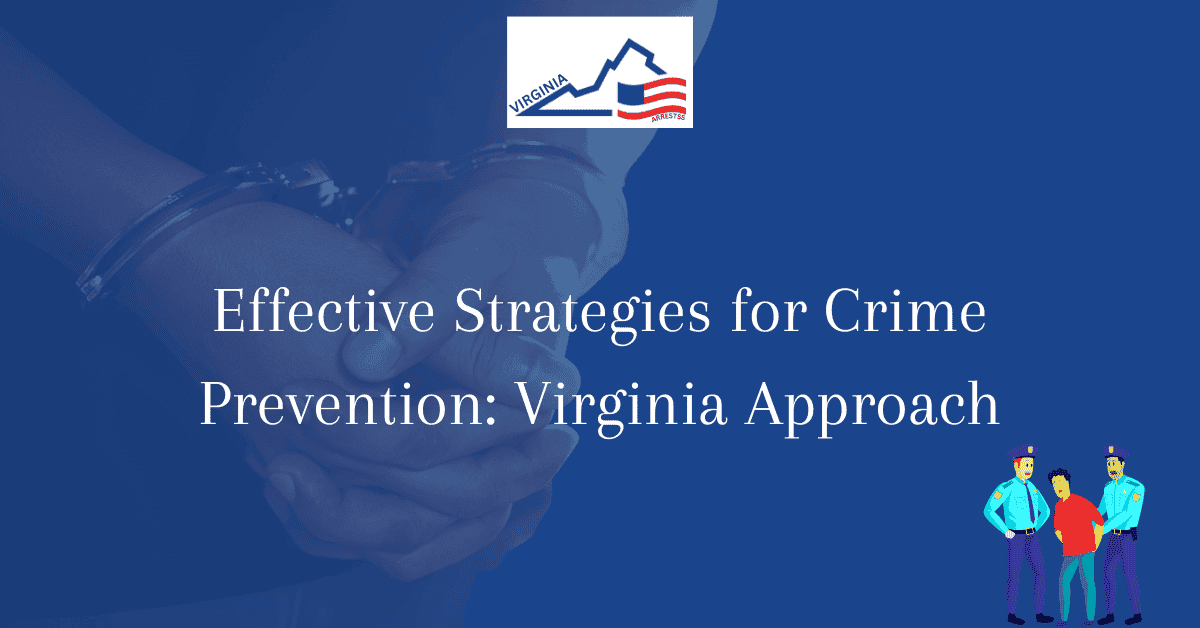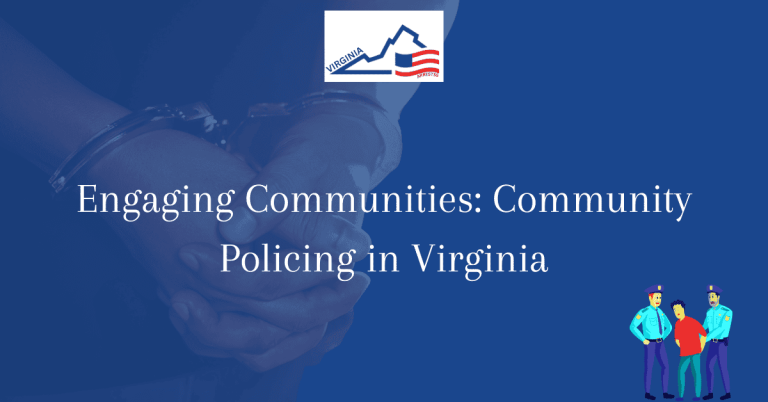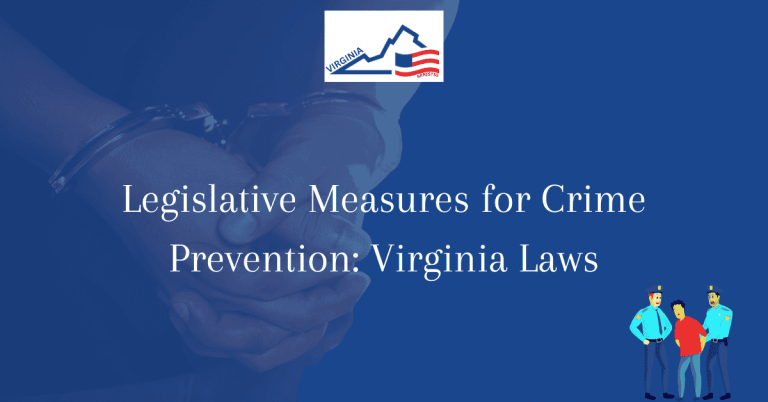Effective Strategies for Crime Prevention: Virginia Approach
Crime prevention is a crucial aspect of maintaining safety and order within communities. The Virginia approach to tackling crime is centered around implementing effective strategies that address root causes and promote proactive measures. By focusing on prevention rather than reaction, Virginia has been able to significantly reduce crime rates and create a safer environment for its residents.
Through collaboration between law enforcement agencies, community organizations, and government entities, Virginia has successfully implemented innovative programs and initiatives that target various forms of criminal activity. By investing in education, social services, and community engagement, the state has been able to address underlying issues that contribute to criminal behavior, ultimately leading to a more secure and harmonious society.
Community Engagement in Crime Prevention
Community engagement plays a crucial role in crime prevention strategies. By involving residents in the process of identifying and addressing safety concerns, law enforcement agencies can build trust and collaboration within neighborhoods. Community watch programs, neighborhood patrols, and town hall meetings are examples of initiatives that promote community involvement in crime prevention efforts. When residents are actively engaged in creating safer environments, they become more invested in maintaining security and reducing criminal activities.
Law Enforcement Collaboration for Safe Communities
Collaboration between law enforcement agencies is essential for creating safe communities. By sharing resources, information, and best practices, police departments can work together to address criminal activities effectively. Task forces, joint operations, and information sharing networks enable law enforcement agencies to coordinate their efforts and target high-crime areas efficiently. Through collaboration, agencies can leverage their strengths and expertise to combat crime and ensure public safety.
Early Intervention Programs for Crime Prevention
Early intervention programs focus on addressing risk factors that contribute to criminal behavior. By providing at-risk individuals with support, resources, and mentorship, these programs aim to prevent future involvement in criminal activities. Youth mentoring programs, counseling services, and educational initiatives help individuals develop positive behaviors and avoid negative influences. Early intervention programs play a vital role in breaking the cycle of crime by addressing underlying issues and promoting positive outcomes.
Targeted Initiatives to Reduce Crime Rates
Targeted initiatives focus on specific crime prevention strategies tailored to address local needs and challenges. By analyzing crime data and identifying trends, law enforcement agencies can develop targeted interventions to reduce crime rates. Strategies such as hotspot policing, focused deterrence, and offender reentry programs aim to target high-crime areas and individuals to prevent criminal activities. Targeted initiatives help law enforcement agencies allocate resources effectively and address root causes of crime in communities.
Prioritizing Prevention Strategies in Virginia
Virginia places a strong emphasis on prioritizing prevention strategies to reduce crime rates and create safer communities. By investing in early intervention programs, community engagement initiatives, and targeted interventions, the state aims to address the root causes of crime and promote long-term public safety. Through partnerships with local organizations, law enforcement agencies, and community stakeholders, Virginia implements a proactive approach to crime prevention that focuses on collaboration, innovation, and sustainability.
Addressing Root Causes of Crime
Addressing the root causes of crime is essential for developing effective crime prevention strategies. By identifying social, economic, and environmental factors that contribute to criminal behavior, communities can implement interventions that address underlying issues. Substance abuse prevention programs, mental health services, and employment opportunities help individuals overcome challenges and avoid engaging in criminal activities. By addressing root causes, communities can create supportive environments that promote positive behaviors and reduce crime rates.
Building a Secure Society through Prevention
Building a secure society requires a proactive approach to crime prevention that focuses on addressing risk factors and promoting community safety. By investing in prevention strategies, early intervention programs, and targeted initiatives, communities can create environments that deter criminal activities and support positive outcomes. Building partnerships between law enforcement agencies, community organizations, and residents is crucial for developing sustainable crime prevention solutions that address the needs of diverse populations. Through prevention efforts, societies can build resilience, reduce crime rates, and create a sense of security for all residents.
Virginia’s Proactive Approach to Crime Prevention
Virginia adopts a proactive approach to crime prevention by prioritizing prevention strategies, collaboration, and community engagement. By investing in early intervention programs, targeted initiatives, and partnerships with local stakeholders, the state aims to reduce crime rates and create safer communities. Virginia’s proactive approach focuses on addressing root causes of crime, implementing evidence-based practices, and promoting innovation in crime prevention efforts. Through a comprehensive and collaborative approach, Virginia is committed to building a secure society that prioritizes prevention, safety, and well-being for all residents.
Frequently Asked Questions
Our Frequently Asked Questions section aims to provide detailed information on Effective Strategies for Crime Prevention: Virginia Approach. Below you will find comprehensive answers to commonly asked questions related to this topic.
What are the key components of the Virginia Approach to crime prevention?
The Virginia Approach to crime prevention focuses on community policing, collaboration between law enforcement agencies and community members, data-driven strategies, and proactive measures to address underlying issues contributing to crime.
How does community policing play a role in crime prevention in Virginia?
Community policing in Virginia involves law enforcement officers building positive relationships with community members, working together to identify and address crime hotspots, and implementing problem-solving strategies to prevent criminal activities.
What role do technology and data analysis play in crime prevention efforts in Virginia?
Technology and data analysis are integral to the Virginia Approach to crime prevention. Law enforcement agencies use data to identify crime trends, allocate resources effectively, and implement targeted interventions to prevent criminal activities.
How does the Virginia Approach prioritize addressing root causes of crime?
The Virginia Approach emphasizes addressing underlying factors contributing to crime, such as poverty, lack of access to education and employment opportunities, and substance abuse. By addressing these root causes, law enforcement agencies aim to prevent crime proactively.
What community engagement initiatives are part of the Virginia Approach to crime prevention?
Community engagement initiatives in Virginia include neighborhood watch programs, youth outreach programs, community forums, and partnerships with local organizations to address social issues. These initiatives aim to foster trust between law enforcement agencies and community members, leading to more effective crime prevention efforts.







